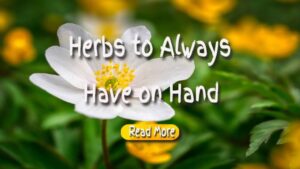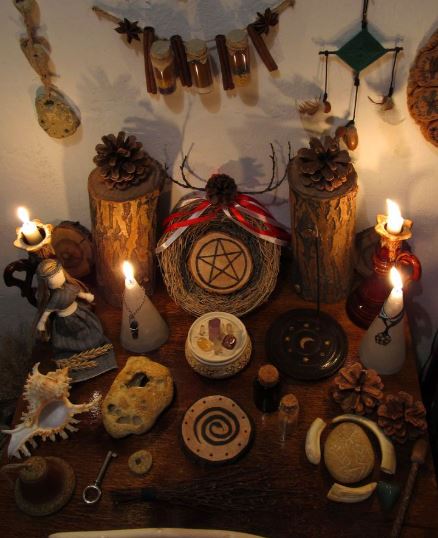Greetings, aspiring witches and curious souls! Welcome to your ultimate destination for all things enchanting and magical. If you’ve ever felt the call of nature, the whisper of the wind, or the allure of the moon, you might just be ready to embark on the captivating journey of becoming a Wiccan witch. Prepare your broomsticks, because we’re about to embark on a spellbinding adventure through the essentials of Wicca, sprinkled with humor and practical advice to guide you along the way.
Embark on Your Wiccan Journey: Unraveling the True Meaning of Being a Witch
Ah, the timeless inquiry: what does it truly mean to be a witch? Well, my dear apprentices, it’s so much more than wearing pointy hats and stirring cauldrons (though those can certainly enhance the experience). Being a Wiccan witch involves creating a profound connection with nature, embracing your inherent power, and striving to live in harmony with the universe that surrounds you. It’s a journey of exploration, self-discovery, and personal growth that invites you to tap into the mystical energies that flow through all living things.
When I first ventured down this path, I imagined I would be casting spells to transform people into toads or conjuring storms at will. Spoiler alert: it’s not quite like that! Instead, I discovered a deep appreciation for the natural world, learning how to channel the energy within and around me. Yes, I occasionally lit candles and chanted beneath the moonlight, creating a sacred space for reflection and intention. This practice allowed me to connect with the energies of the Earth, nurturing a bond that would guide me through my magical journey.
Being a witch can mean different things to different individuals, but at its core, it’s about pursuing knowledge, practicing mindfulness, and respecting the delicate balance of nature. It’s less about casting malicious spells on your annoying neighbor and more about invoking positive influences in your own life and in the world at large. So, if you’re ready to exchange your mundane existence for a sprinkle of magic and mystery, you’re in the perfect place to begin this enchanting journey!

Essential Wiccan Tools: Equip Yourself with Your Magical Starter Kit
Now that we’ve clarified what being a witch entails, let’s discuss the essential tools of the trade. Don’t fret; you won’t need to raid a medieval armory or spend a fortune at your local occult shop. Here’s a concise list of basic items that will assist you in embarking on your magical journey: each tool plays a significant role in your practice and can help you channel your intentions effectively.
- Athame: A ritual dagger used for directing energy, not for slicing your lunch. It symbolizes your will and intent.
- Wand: A tool for channeling energy and looking fabulous while doing it; it's a wand's purpose to direct your magical intent.
- Pentacle: A five-pointed star encircled, representing the elements and spirit, serving as a powerful symbol of protection.
- Cauldron: Perfect for mixing potions or, let’s be honest, holding your favorite snacks during late-night rituals. It represents transformation and rebirth.
- Book of Shadows: Your personal magical diary and recipe book all in one, a place to record your spells, experiences, and insights.
- Candles: Because ambiance is vital, even in the realm of magic, each color can correspond to different intentions.
- Crystals: Nature’s sparkling treasures that come with added spiritual benefits; each crystal has unique properties that can enhance your practice.
- Herbs: For spells, brews, and those occasional culinary experiments that turn magical. Herbs have been used for centuries for their mystical properties.
Remember, these items are merely tools. The true magic lies within you. I began my journey with nothing more than a notebook, a solitary candle, and a bubbling sense of excitement. As you progress, you’ll uncover which tools resonate with your unique practice, helping you to deepen your connection to the craft. Your journey is personal, and it's essential to find what speaks to your heart.
Delving into the Depths of Wicca: Your Beginner’s Guide to the Craft
Alright, let’s immerse ourselves in the fascinating details of Wicca. Think of this as your essential crash course in Witchcraft 101. First and foremost: Wicca is a nature-based, polytheistic religion that honors the cycles of life and the interconnectedness of all things. It’s founded on the principles of respect for the Earth, the celebration of life, and the reverence for both feminine and masculine energies found in the universe. This balance is critical to maintaining harmony in your spiritual practice.
At the heart of Wiccan beliefs lies the Wiccan Rede: “An it harm none, do what ye will.” This serves as a guiding principle for ethical witchcraft, resembling a witch’s version of “don’t be a jerk.” It implies that you’re free to practice your magic, as long as it doesn’t cause harm to anyone, including yourself. So, no hexing your ex or cursing your boss, regardless of how tempting that might seem! This ethical framework is essential for responsible practice.
Another fundamental concept in Wicca is the Rule of Three, which states that any energy you send out into the world will return to you threefold. This principle is akin to karma but with a magical twist. Therefore, focusing on positive, constructive magic is crucial in Wiccan practices. Trust me, you’d want to avoid negative energy bouncing back at you with triple intensity! Cultivating positive intentions will lead to a more fulfilling practice.

Embracing Nature’s Rhythms: Understanding the Wheel of the Year
One of the most beautiful elements of Wicca is its profound connection to the natural world. We celebrate eight sabbats throughout the year, collectively known as the Wheel of the Year. These festivals commemorate the changing seasons and the cyclical nature of life, death, and rebirth. Engaging in these celebrations allows you to align your spiritual practice with the Earth’s natural rhythms. Here’s a brief overview:
- Samhain (October 31): The Wiccan New Year, a time for honoring ancestors and reflecting on life’s cycles, fostering a connection with those who have passed.
- Yule (December 21): Winter Solstice, celebrating the rebirth of the sun and the return of light, marking the triumph of hope over darkness.
- Imbolc (February 1): A festival of light and fertility, welcoming the first signs of spring and the awakening of the Earth.
- Ostara (March 21): Spring Equinox, celebrating balance and fresh beginnings, as day and night stand equal.
- Beltane (May 1): A vibrant celebration of fertility and passion, honoring the union of the God and Goddess.
- Litha (June 21): Summer Solstice, honoring the sun at its zenith, a time of abundance and vitality.
- Lammas (August 1): The first harvest festival, expressing gratitude for abundance and the fruits of your labor.
- Mabon (September 21): Autumn Equinox, a time for balance and thanksgiving, reflecting on the year’s blessings.
Each of these sabbats provides an opportunity to align yourself with nature’s rhythms and reflect on your personal growth. I’ve found that honoring these festivals has deepened my appreciation for the changing seasons and my place within the natural world. Participating in these sacred celebrations also enhances your spiritual practice, allowing you to connect with the energies of the Earth.
Crafting Your Sacred Space: A Step-by-Step Guide to Casting Your First Circle
Now, let’s delve into the exciting part – casting your very first circle! A circle is a sacred space created for rituals and spellwork. It acts as your magical sanctuary, keeping positive energy in and unwanted vibrations out. Here’s a straightforward guide to help you get started, ensuring that your first experience is both meaningful and empowering:
- Cleanse your space: Begin by thoroughly cleaning your ritual area, both physically and energetically. Sweep the floor and burn sage or incense to clear away any lingering negative energy, preparing your space for sacred work.
- Gather your tools: You’ll need your athame or wand, candles for each direction (north, south, east, west), and any additional items you wish to include in your ritual.
- Cast the circle: With your athame or wand in hand, walk clockwise around your space while visualizing a circle of white light forming as you go. Begin and conclude in the east, creating a protective barrier for your magical work.
- Call the quarters: Invoke the elements at each cardinal direction. For example, say, “Guardians of the East, powers of Air, I call upon you to watch over this circle.” This invites the energies of the elements to support your practice.
- Perform your ritual or spellwork: This is the moment where the magic unfolds! Meditate, cast a spell, or simply connect with the energies of nature, allowing yourself to be fully present in the experience.
- Close the circle: Thank the elements and visualize the circle of light dissolving as you walk counterclockwise around the space, grounding yourself after your magical work.
Remember, practice leads to perfection. My initial attempt at casting a circle involved stumbling over my own feet and inadvertently setting my sleeve ablaze with a candle. Learn from my blunders and keep those sleeves rolled up! Each experience contributes to your growth, so embrace the journey.
Mastering the Art of Spell-Casting: Safety, Ethics, and Essential Practices
Alright, apprentices, it’s time to address the elephant in the room – or perhaps, the broomstick in the closet? Spell-casting is often what attracts individuals to Wicca, but it’s crucial to approach this practice with respect, caution, and a healthy dose of common sense. Understanding the responsibilities that come with spell-casting is essential for any budding witch.
First and foremost, always keep the Wiccan Rede at the forefront of your mind. Spells should be cast with positive intentions and aimed for the highest good of all involved. If you need a little financial boost, cast a spell for job opportunities or financial wisdom, not for your neighbor’s lottery winnings to magically land in your bank account. This ethical consideration ensures that your practice remains grounded in integrity.
Secondly, remember that magic is a tool, not a quick fix. It works best when combined with practical action. Want to ace that exam? By all means, cast a spell for clarity and focus, but don’t forget to actually study! The more effort you put into your goals, the more effective your magical work will be.
Here are some best practices for safe and ethical spell-casting:
- Always cast within a protective circle to safeguard your energy and intentions.
- Utilize protection spells and cleansing rituals on a regular basis to maintain your energetic health.
- Be clear and specific in your intentions when casting spells, allowing the universe to respond effectively.
- Avoid manipulating others’ free will through your magical efforts, respecting their autonomy.
- Be prepared for unexpected outcomes, as magic can be unpredictable; embrace the lessons that come from these experiences.
- Maintain a record of your spells and their results in your Book of Shadows for future reference and reflection.
Remember, with great power comes great responsibility. Use your magical abilities wisely, and strive for continual growth and learning throughout your journey.
Creating Your Magical Garden: Harnessing the Power of Herbs for Your Practice
One of the most rewarding aspects of my Wiccan journey has been cultivating my own magical garden. There’s something undeniably fulfilling about growing the herbs that you utilize in your spells and rituals. Plus, it offers a fantastic way to connect with nature each day and to learn the unique properties of the plants that aid your practice. 
Here are some easy-to-grow herbs to kickstart your magical garden, each with its own unique properties to enhance your practice:
- Rosemary: Known for protection, purification, and enhancing memory, making it a wonderful addition to any spell.
- Lavender: Ideal for peace, restful sleep, and love spells; its calming properties are perfect for creating a serene atmosphere.
- Mint: Associated with money, prosperity, and cleansing energies; it brings a refreshing touch to your magical endeavors.
- Sage: Used for wisdom, purification, and banishing negative influences; a must-have for any practitioner.
- Basil: Linked to love, prosperity, and protection; it’s a versatile herb that can be used in various spells.
When planting your garden, consider the magical properties of each herb and group them accordingly. You might create a section for protective herbs, another for love and attraction, and so forth. Remember to show gratitude to the plants when you harvest them and always leave an offering (like water, compost, or a small crystal) in return for their gifts. This practice fosters a reciprocal relationship with nature.
Exploring Divination: Unlocking Wisdom Through Tarot, Runes, and Scrying
Divination offers a fascinating way to tap into cosmic wisdom, and there are countless methods to explore this practice. Whether you’re seeking guidance, insight, or simply a glimpse into what the future holds, divination can serve as a powerful tool in your magical toolkit. Engaging with these practices can enhance your intuition and deepen your understanding of your personal path.
Let’s begin with Tarot. These beautifully illustrated cards may seem daunting at first, but they are fundamentally tools for self-reflection and intuition. Start with a simple three-card spread: representing past, present, and future. As you grow more comfortable, feel free to explore more intricate spreads; each card holds significance and can provide profound insights.
Runes represent another popular divination method. These ancient symbols, carved onto stones or tiles, can offer quick, straightforward answers to your inquiries. Draw three runes from a bag, laying them out left to right to symbolize situation, action, and outcome, using their meanings to guide your understanding.
Scrying involves gazing into a reflective surface to receive visions or messages. You can use a crystal ball, a dark mirror, or even a bowl of water. The key is to relax your eyes and mind, allowing images or impressions to emerge naturally. This practice encourages you to trust your intuition and develop your psychic abilities.
Remember, divination is as much about interpreting the symbols as it is about trusting your intuition. The more you practice, the more intuitive and natural the process will become, enriching your spiritual journey.
Building a Supportive Community: The Importance of Finding Your Coven
While Wicca can certainly be practiced as a solitary path, there’s something truly special about finding your magical tribe. A coven is a group of witches who come together to practice, learn, and grow in their craft. It’s like having a supernatural support system that enhances your magical experiences and fosters friendship.
When I first started my journey, I was somewhat of a lone wolf (or should I say, lone witch?). However, joining a coven opened up an entire universe of shared knowledge, experiences, and friendships. Here are some benefits of connecting with a coven:
- Access to shared wisdom and diverse experiences that can enrich your practice.
- Support and guidance on your magical journey from those who understand your path.
- Group rituals and vibrant celebrations that enhance your spiritual experiences.
- A sense of belonging and community, providing encouragement and companionship.
If you’re interested in locating a coven, begin by searching for local Pagan or Wiccan groups in your area. Many covens host open events or “meet and greets” for potential members. Remember, it’s crucial to find a group that aligns with your personal values and practices, so don’t hesitate to explore your options until you find the right fit for you.
Finding Balance: Navigating Openness and Secrecy in Your Craft
Ah, the timeless dilemma of the modern witch: to remain in the broom closet or to step out? In a perfect world, we would all practice our craft openly, free from judgment or persecution. Unfortunately, that’s not always the case, and many witches opt to keep their practices private to protect their spiritual journey.
There’s no definitive right or wrong when it comes to how openly you express your beliefs. It’s a personal choice that depends on your circumstances, comfort levels, and the potential consequences of revealing your identity as a witch. This decision is deeply personal and should reflect your truth.
If you choose to keep your practice under wraps, here are some tips for navigating the broom closet with grace:
- Use innocuous terms for your tools (e.g., “meditation candles” instead of “ritual candles”) to maintain discretion.
- Store your magical items in a private, secure location to protect your practice.
- Be mindful of what you share on social media, as discretion can safeguard your spiritual journey.
- Have a cover story ready for your altar (e.g., “It’s just a nature-inspired decoration”) to avoid unwanted scrutiny.
<p
Comments are closed



What a spellbinding introduction you’ve crafted! If I could conjure some magic right now, I think I’d create a potion just to bottle up the vibes in this blog and share it with the world. Your reminder that being a Wiccan witch transcends the stereotypical image of pointy hats and cauldrons is refreshing. I must admit, my first exposure to the mystical world depicted witches as either cackling hags or delightful fairytale characters, wielding wands and stirring steamy brews. But the reality is far more enchanting, isn’t it?